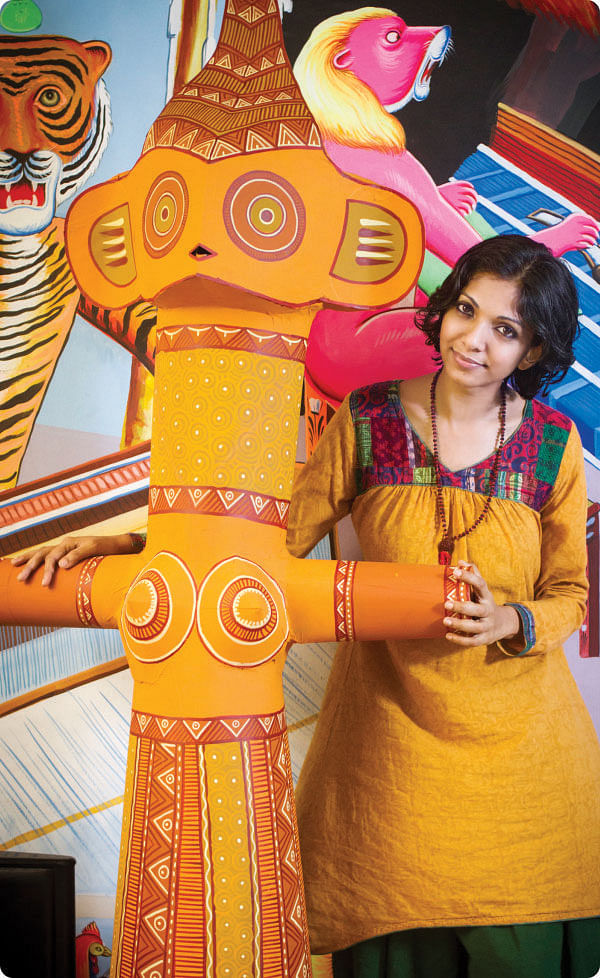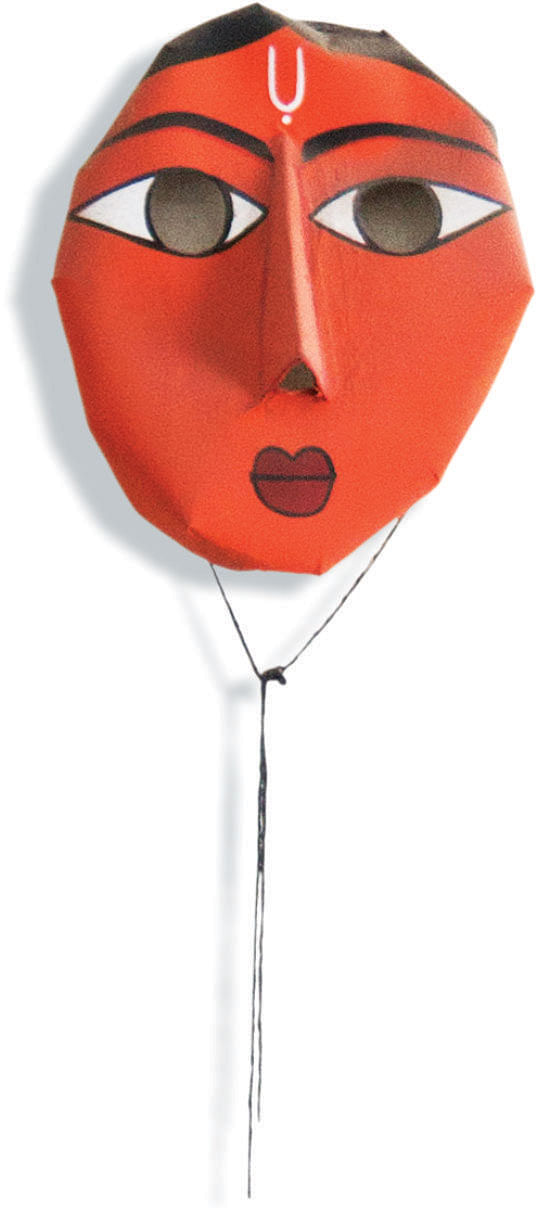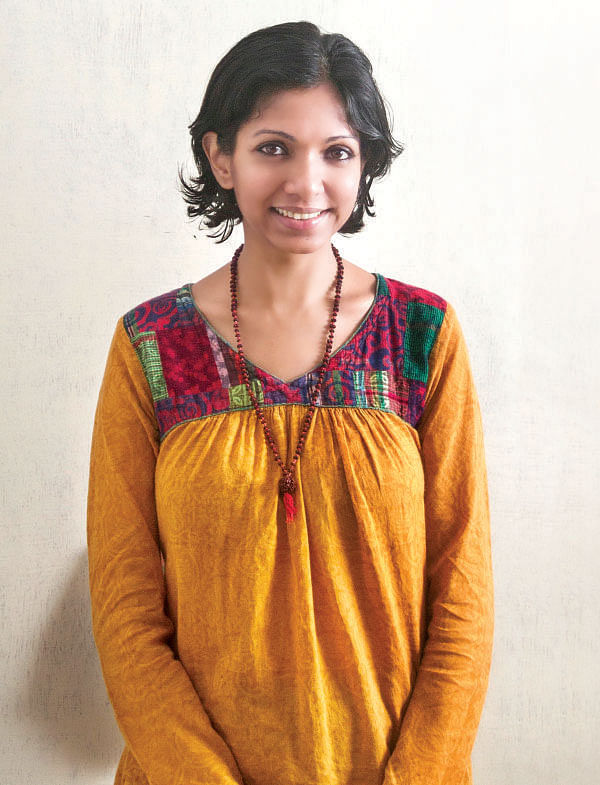SEVEN TALES FROM ANUSHEH

It was a bridge between the rural and the urban, a blend of east and west – a fusion of uncharted proportions. Anusheh and her band 'Bangla' brought the unique style of rich baul culture in a package that had to be felt, not just listened to. It was appealing to all ages – the adults could relate to it and the young could learn from it. When the urban society was not paying attention to the gem of Lalon's mystic songs of harmony and the wonderment of creation, Anushesh made us realize that Lalon is not only for any class or time, Lalon is universal. Promotion-shy singer Anusheh has opened up Jatra, her experiment to bring forth the core handicrafts of Bangladesh. With Jatra, Anusheh is embarking on a project called Shaatkahon, with seven festivals with seven folklores at its core. There are many outlets like Jatra. Then why has Jatra become a household name within a few years? What is Shaatkahon? With questions like these, I had a very insightful conversation with Anusheh.
What is Shaatkahon? Should we be excited?
For the last six months… Its more than six, probably for almost a year, we've been working on the Shaatkahon project – it literally means seven tales. We have seven divisions in Bangladesh and each has its unique style of handicrafts and culture. Even the flora and fauna is different. We are taking each division as chapters, and each chapter will reflect each part of the country. Each chapter will be represented through fairs, which will be on seven flowers, seven leaves and seven folklores. The themes are: Behula, Bonbibi, Goloncho, Gunaibibi, Hasan Raja, Joba, Kajol Rekha, Kolmi, Monori, Oporajita, Podmo, Santal, Shundori and Telakucha. We're calling it 'Shaatkahon Rangeela', because after the fair, you will be leaving with colours.

Another attraction of the fairs will be the crafts and craftsmen. For instance; the Panka-makers (hand fan) and wooden doll-makers will be present with their creations. To bring variety, there will not only be Pankhas only. We made other pieces using Pankhas. Out of seven, the first chapter began on the 10th of April and ended on the 14th, bringing to light the crafts of Dhaka division. All the fairs will also have musical programs. The first day of the first fair featured Rob Fakir our new band Bahok on the second day. Buno and Arnob also performed, but very casually – not as a band. Shayn, the guitarist was featured on the third day. Joler Gaan was on stage on the fourth day and Kangalini Sufiyani on the last, which was on the 14th. The venue was Jatra in Dhanmondi. The next fair will probably feature Sylhet division.

How did the idea of Shaatkahon come to you?
We always worked with a certain theme at Jatra. Before, we worked on Gamcha (thin towel), Deho Chakra (seven elements of body), rickshaw art, Masjids and tribal art. The idea of Shaatkahon is wider than any other project we have done before – it consists of arts and culture of all seven divisions of the country. Take Zamdani for example; I know many larger works have been done on Zamdani, but we feel, we also have something to offer about Zamdani that is unique. Thus Shaatkahon Rangeela came about.
Where are the venues of the rest six fairs? And how long will it take to complete all seven?
Although all seven fairs will be on seven divisions, the venue will remain the same, at Dhanmodi, Jatra. As you can understand, it is a huge project, spanning two years. We expect to have the last fair on Pohela Baishakh of 2016.
Would I be wrong if I say you've become a corporate lady?
Well, it depends how you define “corporate”. If working hard and being a businessperson is “corporate” then, sure I am one. Because that's what I do and really believe in what I do and it is very important. I think doing what I do now is sometimes more fulfilling. I can employ thousands, give them a livelihood – with music, I could only give a little peace. With Jatra I am being able to give somebody a job, provide some sort of security. It gives me immense satisfaction. Most skilled people in Bangladesh end up working for some foreign companies rather than being part of a local business. So, I don't know how you define “corporate”, but I know that I am proud of what I do.
With your background, you could've been a politician. Why didn't you?
I think people listen to musicians more politicians. I have hundreds of thousands of fans now but if was into politics, perhaps no one would've liked me or listened to me.
But you are somewhat a political activist too, aren't you?
I wouldn't say I'm an activist. But, if I feel that I have something to say about a matter then I won't hold back from saying it. Some are not very fond of my style of being straightforward. In fact, I sometimes avoid the media because they often try to filter what I want to say. It has so happened that in the middle of me speaking, they chose to cut and go to a commercial and request me to bring up some issues other than the one I was talking about.

What is your view on religion and spirituality?
I don't want to confine myself into a particular religion but I am a very spiritual person. The most influential person in my life is my maternal grandfather, Bir Uttom Quazi Nuruzzaman, a war hero and Liberation War sector commander. He is also the founder of Ghatak Dalal Nirmul Committee. My philosophy and spirituality has a deep connection to him. He was a very left-leaning skeptic person. Unlike many who turn into skeptics from being a religious person, I, on the other hand, through my journey of life grew up as a skeptic who found spirituality. I went through a period where I saw the connection of spirituality in people – almost like I was possessed. I could see an aura around certain people. One of the main reasons of my journey with the bauls was because I too was living in a very boxed and materialistic society. I thought I should believe with the power of sight, not blindly. The connection to spirituality happens as soon as you start feeling – when it goes down from head-space to heart-space. We do think a lot but not with heart and we don't learn to feel. To me, music is feeling too, which is why I relate to music so much. Like every color is a feeling, not a thought. Somehow, I discovered how to think with feeling. I suppose that is my spirituality. But strictly, I am not into any “isms”.
These experiences, were they in any way connected to you being intoxicated?
Maybe they were to some extent, but I don't regret that period. Without that journey, I would've never found the hidden part of myself. I don't think it's a matter of surrealism or something dreamy. Plants and trees have life too, they too interact with us when we consume them.
What is being a mother and woman to you?
The world is afraid of the invisible side of us. I call it the feminine side – we all have it. We are just afraid to explore it. Women are intrinsically intuitive. When my child is ill, I can just feel it inside me even if I am far away. Our patriarchal society has always tried to discard that power in women.
Then, are you a feminist?
No! I am a humanist. Every human being is an embodiment of both feminine and masculine characteristics. Once we learn to accept this fact many of our inner problems would cease. I am a woman but very male at times. Life is about duality – we carry both. We don't have to be “either-or”.

 For all latest news, follow The Daily Star's Google News channel.
For all latest news, follow The Daily Star's Google News channel. 



Comments